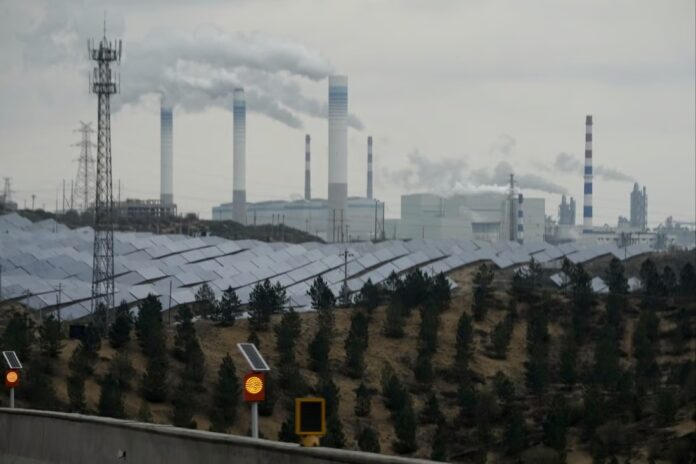Taking a shot at the architects behind the European Union’s new climate policy, a Chinese central banker says the bloc’s Carbon Border Adjustment Mechanism (CBAM) functions as a “new tariff barrier” that violates economic principles.
The CBAM, which will enter into effect in October, is designed to prevent “carbon leakage”, where carbon-intensive imports from countries with less stringent climate policies outcompete domestic production.
Under the new rules, importers in the EU would have to pay the price difference between the carbon emission price paid in the country of origin and that of domestic production in the EU.
“If Europe imposes taxes based on the [carbon] price differences on relevant products from China, it may have a very large impact on China’s related industries and enterprises,” Zhou Chengjun, director of the Financial Research Institute of the People’s Bank of China, said at an academic forum in Beijing on Saturday, according to Chinese media outlet.
The news site reported that Zhou likened the CBAM to a “new tariff barrier” that will have a detrimental impact on globalisation efforts.
Zhou said the carbon import tax scheme “goes against basic economic principles”, contending that carbon emissions have no place in cross-border trade.
“The basic principles of international economics tell us that the basic premise of cross-border trade and taxation is that products and services are tradeable,” he said. “For non-tradeable goods, because they cannot be traded cross border, there should be no so-called tax issues.”
Look at haircuts, he tried to explain, pointing to a different type of “non-tradeable good”. While the average price of a man’s haircut is about 50 euros (US$55) in the EU, it is merely 50 yuan (US$7) in Beijing. Yet, that doesn’t mean Europe can tax the difference, because haircuts are not a tradeable service.
In early June, China’s ambassador to the World Trade Organization, Li Chenggang, said the carbon tariff would unfairly penalise developing countries, the Post reported.
According to the European Commission, importers will need to report on emissions embodied in their imports of goods during a transition period until the end of 2025. Carbon charges will be phased in starting from 2026, and take full effect in 2034.
In the first five months of 2023, the EU was China’s second-largest export destination, only after the Association of Southeast Asian Nations, according to China Customs data.
The EU mechanism will initially apply to six carbon-intensive industries: cement, iron and steel, aluminium, fertilisers, electricity, and hydrogen.
While China does not export electricity to the EU, it does export the other five impacted products to the region. China is one of the bloc’s top suppliers of cement, aluminium, iron and steel.
The CBAM could increase export costs for China’s steel industry by 4 to 6 per cent, with US$200 million to US$400 million in new carbon taxes, said Fan Tiejun, head of the China Metallurgical Industry Planning and Research Institute, in an interview with China Environment News in May.
Its short-term impact is manageable for China, but risks could rise in the long run, Fan said.
“With the gradual expansion of industry coverage by the CBAM, and the widening of the carbon price gap between China and Europe, China’s steel products will need to bear higher export costs and taxes when exported to Europe,” Fan said. “And other developed countries may also set up trade barriers similar to CBAM.
“Together these would have a more profound and extensive impact on China’s steel industry.”








































